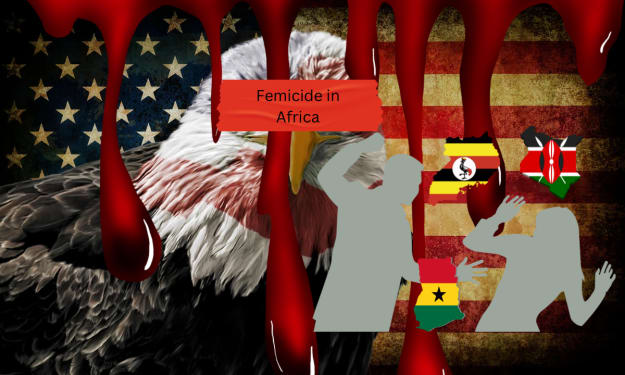In Search of Sanctuary‼️
Breaking down the journey through the Underground Railroad‼️

The Underground Railroad was a network of secret routes and safe houses established in the United States during the early to mid-19th century, and used by enslaved African-Americans to escape into free states and Canada. The scheme was assisted by abolitionists and others sympathetic to the cause of the escapees.
The enslaved who risked escape and those who aided them are also collectively referred to as the "Underground Railroad". Various other routes led to Mexico, where slavery had been abolished, or overseas. An earlier escape route running south toward Florida, then a Spanish possession (except 1763–83), existed from the late 17th century until approximately 1790.
However, the network now generally known as the Underground Railroad was formed in the late 1700s. It ran north and grew steadily until the Civil War began. One estimate suggests that, by 1850, 100,000 enslaved people had escaped via the network.
To reduce the risk of infiltration, many people associated with the Underground Railroad knew only their part of the operation and not of the whole scheme. "Conductors" led or transported the fugitives from station to station. A conductor sometimes pretended to be enslaved in order to enter a plantation.
Once a part of a plantation, the conductor would direct the runaways to the North. Enslaved people traveled at night, about 10–20 miles (16–32 km) to each station. They rested, and then a message was sent to the next station to let the station master know the escapees were on their way. They would stop at the so-called "stations" or "depots" during the day and rest. The stations were often located in barns, under church floors, or in hiding places in caves and hollowed-out riverbanks.
The resting spots where the escapees could sleep and eat were given the code names "stations" and "depots", which were held by "station masters". "Stockholders" gave money or supplies for assistance. Using biblical references, fugitives referred to Canada as the "Promised Land" or "Heaven" and the Ohio River as the "River Jordan", which marked the boundary between slave states and free states.
The Underground Railroad did not have a headquarters, nor were there published guides, maps, pamphlets, or even newspaper articles. The Underground Railroad consisted of meeting points, secret routes, transportation, and safe houses, all of them maintained by abolitionist sympathizers and communicated by word of mouth.
Participants generally organized in small, independent groups; this helped to maintain secrecy because individuals knew some connecting "stations" along the route but knew few details of the escapees' immediate area. People escaping enslavement would move north along the route from one way station to the next.
"Conductors" on the railroad came from various backgrounds and included free-born Blacks, white abolitionists, the former enslaved (either escaped or manumitted), and Native Americans. Church clergy and congregations of the North often played a role, especially the Religious Society of Friends (Quakers), Congregationalists, Wesleyans, and Reformed Presbyterians, as well as the anti-slavery branches of mainstream denominations which split over the issue, such as the Methodist church and the Baptists.
I remember sometime ago, while they were restoring St. Marys Church, the one located in the back of Calvert Square, here in Norfolk Virginia. one of the restorers, accidentally found one of those safe houses secured under the building. A just another tid bit, right over yonder, off the Elizabeth River, were where the ships would dock, loading and carrying the slaves, who were tucked under the floor boards. All this because was possible only because of free Blacks was crucial; without it, there would have been almost no chance for fugitives from slavery to reach freedom safely.
At its peak, nearly 1,000 enslaved people per year escaped from slave-holding states using the Underground Railroad – more than 5,000 court cases for escaped enslaved were recorded – many fewer than the natural increase of the enslaved population. The resulting economic impact was minuscule, but the psychological influence on slave holders was immense.
Under the original Fugitive Slave Act of 1793, officials from free states were required to assist slaveholders or their agents who recaptured fugitives, but citizens and governments of many free states ignored the law, and the Underground Railroad thrived.
With heavy lobbying by Southern politicians, the Compromise of 1850 was passed by Congress after the Mexican–American War. It stipulated a more stringent Fugitive Slave Law; ostensibly, the compromise addressed regional problems by compelling officials of free states to assist slave catchers, granting them immunity to operate in free states.Because the law required sparse documentation to claim a person was a fugitive, slave catchers also kidnapped free blacks, especially children, and sold them into slavery.
Southern politicians often exaggerated the number of escaped slaves and often blamed these escapes on Northerners interfering with Southern property rights. The law deprived people suspected of being slaves the right to defend themselves in court, making it difficult to prove free status. In a de facto bribe, judges were paid a higher fee ($10) for a decision that confirmed a suspect as an enslaved person than for one ruling that the suspect was free ($5).
Many Northerners who might have ignored enslavement issues in the South were confronted by local challenges that bound them to support slavery. This was a primary grievance cited by the Union during the American Civil War, and the perception that Northern States ignored the fugitive slave laws and regulations was a major justification for secession.
Abolitionism in the United States was an expression of moralism, and usually had a religious component to it: slavery was incompatible with Christianity, according to the many religious abolitionists. It was known as the safe house (also spelled safehouse) is, in a generic sense, a secret place for sanctuary or suitable to hide persons from the law, hostile actors or actions, or from retribution, threats or perceived danger.
We today know it as a sacred place, such as a shrine. By the use of such places as a haven, by extension the term has come to be used for any place of safety. It was where people went to find relief, to obtain support, to get the comfort they needed to continue with their lives. It was a place of spiritual, emotional, mental, and even physical healing, the sanctuary. It was the one place where no one had to fight, no one had to die, no one had to cry, the sanctuary. OH HOW I LONG TO BE IN THE SANCTUARY. Where the wicked shall cease from troubling, and the weary, shall be at rest, the sanctuary.
By 1850, some 15 years before to the thirteen amendment, Which solidified the freedom of the African-American people, some 15 years before the emancipation proclamation begin the conversation legislatively as a pertains to the freedom of the African-American people.
More than 100,000 black folks had already made up in their mind. You see I don’t need law when my minds made up,
- I don’t need a 2/3 majority when my mind is made up,
- I don’t even need the endorsement of a politician when my minds made up.
More than 100,000 people have got together with their white counterparts, and said the government don’t have to give us away, will make away. But they had to be dedicated, they had to be focused, they had to believe without shadow without, they lived by the conviction, then if I try I may die but if I stay here most certainly go die.
And so they went traveling some 800 miles over six weeks, on a route winding through Maryland, Pennsylvania and New York. Until eventually arriving in the land of freedom. They wouldn’t take no for an answer one historian argued. Creating in the path that would liberate thousands and give hope to millions.
About the Creator
Erik DeSean Barrett
Blogger👨🏾💻 Vlogger🎥 Podcaster🎙Life Enthusiasts!!! On mission to prove one can do what they believe despite what anyone says.






Comments
There are no comments for this story
Be the first to respond and start the conversation.